Chronic Obstructive Pulmonary Disease (COPD)
Chronic obstructive pulmonary disease, often abbreviated as COPD, is a chronic lung disease manifested by restricted respiratory airflow. COPD causes significant damage to the lungs, and COPD patient most of the time experiences difficulty in breathing. COPD is generally not completely reversible and is usually progressive in nature, associated with an abnormal inflammatory reaction in the lungs in response to toxic particles in the environment. COPD not only affects the ventilation function of the lungs but is also a systemic disease, and its comorbidities include anxiety, depression, osteoporosis, etc. Although COPD is a chronic disease, early detection and diagnosis can effectively prevent the acute onset of symptoms and control the development of the condition promptly.

COPD Symptoms
Common symptoms of COPD are the following:
- Chronic cough: Patients with COPD have a long-term chronic cough. As the disease progresses, this cough symptom can develop into a lifelong cough. Generally, the cough symptoms are pronounced when the patient wakes up in the morning. Patients may also experience paroxysmal coughing or sputum production at night.
- Coughing up sputum:Patients with COPD often cough up sputum and phlegm non-stop. When they cough, the sputum is usually white mucus or serous foamy sputum and may occasionally contain blood streaks. Generally, sputum production is more in the early morning and during an acute attack.
- Dyspnea:Patients will have shortness of breath or difficulty breathing. In the early stage, this symptom usually occurs when they are tired. As the disease progresses, the symptoms gradually worsen, leading to shortness of breath during daily activities or even at rest. Shortness of breath is considered the hallmark symptom of COPD.
- Chest tightness and wheezing:Patients may have wheezing and chest tightness. Some patients, especially severe patients, may wheeze during acute exacerbation. Besides the above symptoms, if COPD has reached the advanced stage, other symptoms will appear, such as weight loss, loss of appetite, and other symptoms.
What Causes COPD?
Exposure to dust, smoking, cooking fumes, inhalable toxic particles, cold weather, aging, respiratory infections, and long-term asthma are all high-risk factors for COPD.
Red Light Therapy for COPD Management
Currently, it is not possible to cure COPD, but the development of the disease can be delayed through medications such as bronchodilators, pulmonary rehabilitation, and surgery in severe cases. Red light therapy devices are a physiotherapy technique comprised of concentrated red and near-infrared (660-850 nm) light energy to stimulate the human body's cellular processes by photobiomodulation. Several research studies have shown the positive outcomes of red light therapy in chronic disease symptoms, such as wound healing, tissue repair, and muscle strengthening. Because red light therapy is a revolutionary healthcare technology that is painless, non-invasive, and has no side effects, it significantly improves the non-pharmacological strategy to deal with pain, reduces inflammation, and improves overall health.

Scientifically, red light therapy possesses a unique capacity to penetrate deeply into body tissue and organs without causing any damage. Shining red light therapy on the body can directly cross the skin and reach the lung cells to deliver therapeutic benefits. Research conducted on 12 male COPD patients showed that "photobiomodulation of 630 nm application on pulmonary muscles improves the functional capacity of lungs in the COPD individuals." Red light therapy can prevent and delay COPD symptoms in several ways.
Reduce Lung Inflammation
One of the potent features of red light therapy is its soothing effect on inflammation, especially chronic inflammation in cells that causes dangerous oxidative stress. Inflammation is the root cause of COPD, and red light therapy rapidly improves the body's self-healing mechanism and increases the anti-inflammatory response by inducing immune responses. Red light therapy boosts the production of red blood cells and stem cells, which, in addition to transporting oxygen to bring nutrients to the body, can promote phagocytosis and thus enhance immunity.
A 2018 research study on COPD animal models showed that "red light treatment for 15 days significantly reduces the number of inflammatory and pro-inflammatory cytokine levels such as IL-1, IL-6, and TNFα in lungs."
Strengthen Respiratory Muscles
Shortness of breath and wheezing lead to increased breathing work, put extra strain on the respiratory muscles, and cause lung muscle weakness and fatigue. Red light therapy activates mitochondria in each cell and boosts ATP supply to organs, blood circulation, and metabolism.
It can help bring more oxygen and nutrients to strengthen lung tissues. The key to relieving COPD is also to promote blood circulation. Poor blood circulation makes the body more prone to long-term inflammation and chronic diseases. Red light application on pulmonary muscles improved the strength of respiratory muscles in the COPD patients."

Support Lung Tissue Repair
In COPD, several structural and functional changes appear, which cause loss of elasticity and destruction of lung tissues. Improving tissue repair is one of the most popular uses of red light therapy. Red light increases cellular processes, which are indispensable for repair and regeneration. Using red light therapy immediately after a COPD diagnosis could speed up lung tissue healing mechanisms by boosting metabolism.
Conclusion
To improve lung function and prevent the lungs from deteriorating, COPD patients should pay attention to a healthy lifestyle. The main advantage of using an RLT device in managing COPD is that it can treat the root cause of COPD and bring overall health benefits. Further study on the benefits of this non-pharmacological option is warranted.
References and Citations
[1] Christenson SA, Smith BM, Bafdhel M, Putccha N. Chronic obstructive pulmonary disease. Lancet. 2022 Jun 11;399(10342):2227-2242.
[2] Lu YS, Chen J, Lee CL, Kuo FY, Tsng YH, Chen CH. Effects of PBM as an adjunctive treatment in COPD: a narrative review. Lasers Med Sci. 2023 Jan 28;38(1):56.
[3] de Souza GHM, Ferraresi C, Moreno MA, Pessoa BV, Damiani APM, Filho VG, Dos Santos GV, Zamunér AR. Acute effects of photobiomodulation therapy applied to respiratory muscles of chronic obstructive pulmonary disease patients: a double-blind, randomized, placebo-controlled crossover trial. Lasers Med Sci. 2020 Jul;35(5):1055-1063.
[4] da Cunha Moraes G, Vitoretti LB, de Brito AA, Alves CE, de Oliveira NCR, Dos Santos Dias A, Matos YST, Oliveira-Junior MC, Oliveira LVF, da Palma RK, Candeo LC, Lino-Dos-Santos-Franco A, Horliana ACRT, Gimenes Júnior JA, Aimbire F, Vieira RP, Ligeiro-de-Oliveira AP. Low-Level Laser Therapy Reduces Lung Inflammation in an Experimental Model of Chronic Obstructive Pulmonary Disease Involving P2X7 Receptor. Oxid Med Cell Longev. 2018 Mar 4;2018:6798238.
[5] Miranda EF, Diniz WA, Gomes MVN, de Oliveira MFD, de Carvalho PTC, Leal-Junior ECP. Acute effects of photobiomodulation therapy (PBMT) combining laser diodes, light-emitting diodes, and magnetic field in exercise capacity assessed by 6MST in patients with COPD: a crossover, randomized, and triple-blinded clinical trial. Lasers Med Sci. 2019 Jun;34(4):711-719.



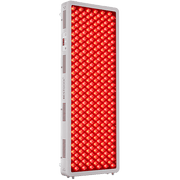








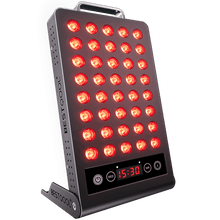
 Small
Small
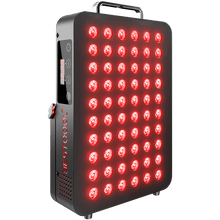
 Moderate
Moderate
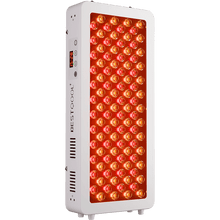
 Moderate
Moderate
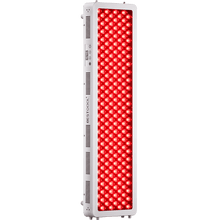
 Moderate
Moderate
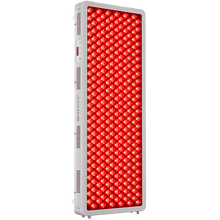
 Full
Full



